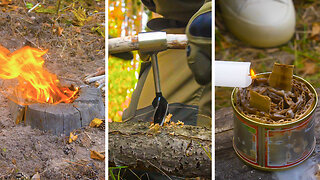Premium Only Content
![Mate (drink) -- Mate or maté[a] (/ˈmæteɪ/) also known as chimarrão or cimarrón,](https://1a-1791.com/video/s8/6/X/F/-/F/XF-Ff.OvCc.jpg)
Mate (drink) -- Mate or maté[a] (/ˈmæteɪ/) also known as chimarrão or cimarrón,
Mate or maté[a] (/ˈmæteɪ/) also known as chimarrão or cimarrón,
Mate was consumed by the Guaraní and Tupí people groups. It has been smashed in South America since before the appearance of Europeans. Its utilization was elite to the locals of Paraguay,[2] all the more explicitly the branches of Amambay and Alto Paraná. A few ethnic gatherings that consumed it are the Avá, the Mbyá and the Kaiowa, and furthermore, less significantly, other ethnic gatherings that completed exchange with them, for example, the ñandevá, the Taluhets (old pampas) and the Qom (Tobas).[citation needed] It is the public drink of Argentina,[3] Paraguay and Uruguay and is likewise drunk in the Bolivian Chaco, Northern and Southern Chile, southern Brazil, Syria (the biggest merchant on the planet) and Lebanon, where it was brought from Paraguay and Argentina by immigrants.[4][5]
Yerba mate (Ilex paraguariensis), ka'a in the Guarani language, contains (among different mixtures) the energizer caffeine. The leaves are dried and hacked or ground to make the coarse fine planning called yerba[c] (signifying 'spice'), which is then absorbed boiling water.
The metal straw is known as a bombilla or bomba and is customarily made of silver. Current straws are normally made of nickel silver, treated steel, or empty stemmed stick. The bombilla capabilities both as a straw and as a strainer. The lowered end is erupted, with little openings or spaces that permit the blended fluid in, however obstruct the stout matter that makes a big deal about the combination. A cutting edge bombilla configuration utilizes a straight cylinder with openings or a spring sleeve to go about as a sieve.[6]
The compartment the mate is served in is otherwise called mate.[d] It is regularly produced using calabash gourd however may likewise be made from different materials.
Today, mate tea is sold economically in tea packs and as packaged chilled tea.
-
 46:31
46:31
PMG
12 hours agoHannah Faulkner and Mary Flynn | REVIVING THE AMERICAN DREAM - GROWING UP A FLYNN
365 -
 3:01
3:01
Kirill MultitoolOfficial
23 hours ago $3.35 earnedSurvival skills and Bushcraft HACKS in the forest!
19.8K5 -
 11:52
11:52
Dr. Nick Zyrowski
11 hours agoWhat Can I Eat On The Carnivore Diet? | Detailed Guide
19.7K4 -
 16:23
16:23
TSPLY
20 hours agoNew CNN / MSNBC Meltdown Moments Of Getting Mad At Donald Trump And Elon Musk
13.2K13 -
 30:54
30:54
Cooking with Gruel
19 hours agoCooking with Matt and Ginger Gaetz
12.3K4 -
 1:22:55
1:22:55
MTNTOUGH Fitness Lab
21 hours agoHomeland Security Pulls Us Off The Plane! Jaw-Dropping Moments from MTNTOUGH's 2024 Ibex Hunt
30.2K1 -
 1:05:30
1:05:30
Kyle Rittenhouse Presents: Tactically Inappropriate
16 hours ago $0.67 earnedHey Doge, Where's My Coin?
14.4K3 -
 4:44
4:44
America First Policy Institute
23 hours agoAmerica First Unfiltered: Trump’s Historic First Month – Real Wins for Real Americans! 🇺🇸 #news
16.1K2 -
 8:22
8:22
DropItLikeItsScott
1 day ago $0.42 earnedThis IS one of the Greatest AR's EVER! The Nemesis by Special Ops Tactical
10.8K2 -
 2:42:30
2:42:30
TimcastIRL
13 hours agoKash Patel CONFIRMED, Deep State PANICS, Mitch McConnell To RETIRE w/ Kevin Smith | Timcast IRL
207K438